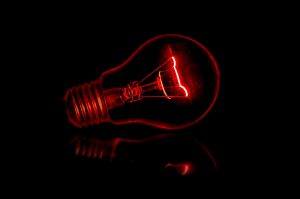Type 2 diabetes is a metabolic disease characterized by insulin resistance and elevated blood glucose levels. In the search for complementary alternatives to improve glycemic control, red light therapy has gained attention due to its potential to enhance circulation, reduce inflammation, and optimize cellular function. But what does science say about it?
✨ What is Red Light Therapy?
Red light therapy (RLT) is a non-invasive treatment that uses specific wavelengths of red and near-infrared light (between 600 and 1000 nm) to penetrate the skin and stimulate cellular function. Its application has been studied in various health areas, including tissue regeneration, pain relief, and muscle performance enhancement.
💡 Benefits of Red Light on Blood and Its Relationship with Diabetes
Recent studies have explored how red light can influence metabolic health and glucose control. Here are some of its main benefits:
1. Improves Blood Circulation
People with diabetes often experience circulatory problems due to blood vessel damage. Red light stimulates the production of nitric oxide, a key compound for vasodilation, improving blood flow and tissue oxygenation.
2. Reduces Inflammation and Oxidative Stress
Chronic inflammation and oxidative stress play a crucial role in insulin resistance. Red light therapy has been shown to reduce inflammatory markers such as interleukin-6 (IL-6) and C-reactive protein, which could enhance insulin sensitivity.
3. Stimulates Mitochondrial Function and ATP Production
Mitochondria are the “powerhouses” of our cells, and their dysfunction is linked to type 2 diabetes. Red light stimulates the enzyme cytochrome c oxidase, increasing ATP (cellular energy) production and improving metabolic function.
4. Aids in the Healing of Diabetic Wounds
Foot ulcers are a common complication of diabetes. Red light therapy accelerates tissue repair by increasing cell proliferation and vascularization, which could be crucial in preventing amputations in diabetic patients.
💊 Scientific Evidence and Recent Studies
A study published in Photomedicine and Laser Surgery found that red light therapy improved insulin sensitivity in type 2 diabetes patients, reducing insulin resistance by 15%. Another study in the Journal of Diabetes Science and Technology showed that regular red light application helped lower blood glucose in mice with induced diabetes.
While the evidence is promising, more clinical trials in humans are needed to confirm its effectiveness and determine the optimal treatment dosage and duration.
🎡 How is Red Light Therapy Applied?
There are different ways to apply it:
Home-use red light lamps for 10-20 minute daily sessions.
Infrared light panels in specialized clinics.
Portable devices for localized application on wounds or inflamed areas.
It is essential to consult a healthcare professional before starting any treatment to ensure it is suitable for each case.
🔄 Conclusion
Red light therapy is a promising tool in the complementary treatment of type 2 diabetes. Its benefits in circulation, inflammation, and cellular function could contribute to better glycemic control and reduced complications. Although human research is still developing, it is an interesting option for those looking for innovative alternatives to optimize their metabolic health.
Have you tried red light therapy? Share your experience in the comments! 🚀

Type 2 Diabetes: Is It Really Reversible?
A recent National Geographic article [link] explores how type 2 diabetes could be reversible with the right approaches. This condition, which affects millions of people worldwide, has long been considered a chronic and progressive disease. However, recent research challenges this perception and suggests that with lifestyle changes and the right approach, remission is possible. The

How Do GLP-1 Drugs Compare? A Breakdown of Ozempic, Mounjaro, and Trulicity
GLP-1 receptor agonists have revolutionized diabetes management, with drugs like Ozempic, Mounjaro, and Trulicity leading the market. But how do these medications compare in terms of effectiveness, side effects, and patient outcomes? Let’s explore their differences and what they mean for diabetes patients. Understanding GLP-1 Medications GLP-1 receptor agonists mimic a natural hormone that helps

Why Has Medicare Spending on Diabetes Medications Skyrocketed in 5 Years?
In the past five years, Medicare spending on diabetes medications has increased nearly fivefold, reaching $35.8 billion in 2023. This surge has been primarily driven by the growing use of GLP-1 drugs such as Ozempic, Mounjaro, and Trulicity. But what is behind this cost escalation, and how does it affect patients and the U.S. healthcare

The Gut Microbiota and Blood Sugar Control: A Hidden Connection
The human gut is home to trillions of bacteria that play a crucial role in digestion, immune function, and even metabolism. Recent research has revealed a fascinating link between the gut microbiota and blood sugar regulation, shedding light on how the balance of microbes in our intestines can influence diabetes risk and overall metabolic health.

The Dawn Phenomenon: Why Blood Sugar Rises While You Sleep
For many people with diabetes, waking up with high blood sugar levels can be frustrating—especially if they didn’t eat anything overnight. This early-morning spike in blood glucose is known as the Dawn Phenomenon, and it happens due to natural hormonal changes in the body. But why does it occur, and how can it be managed?

The Influence of Red Light on Blood: Can It Improve Diabetes?
ShareTweetShareType 2 diabetes is a metabolic disease characterized by insulin resistance and elevated blood glucose levels. In the search for complementary alternatives to improve glycemic control, red light therapy has gained attention due to its potential to enhance circulation, reduce inflammation, and optimize cellular function. But what does science say about it? ✨ What is

